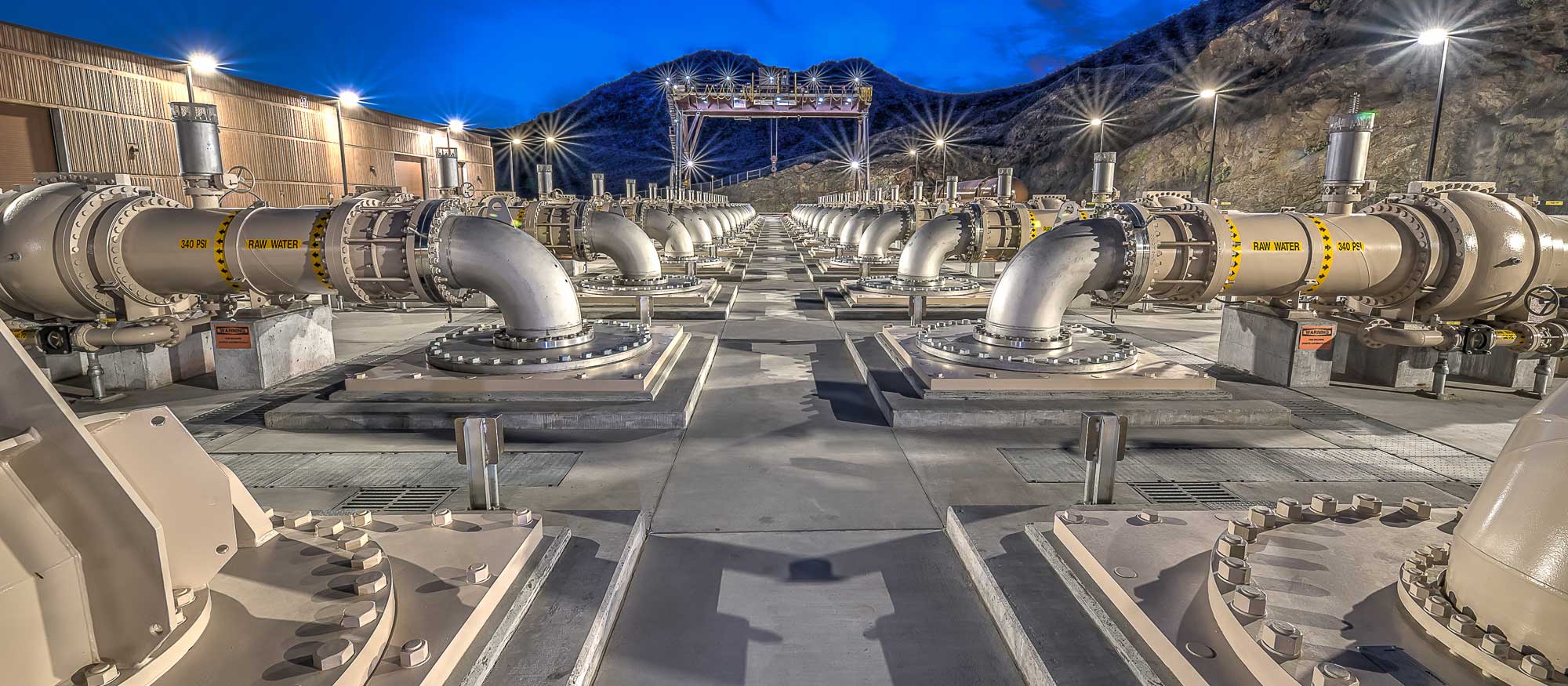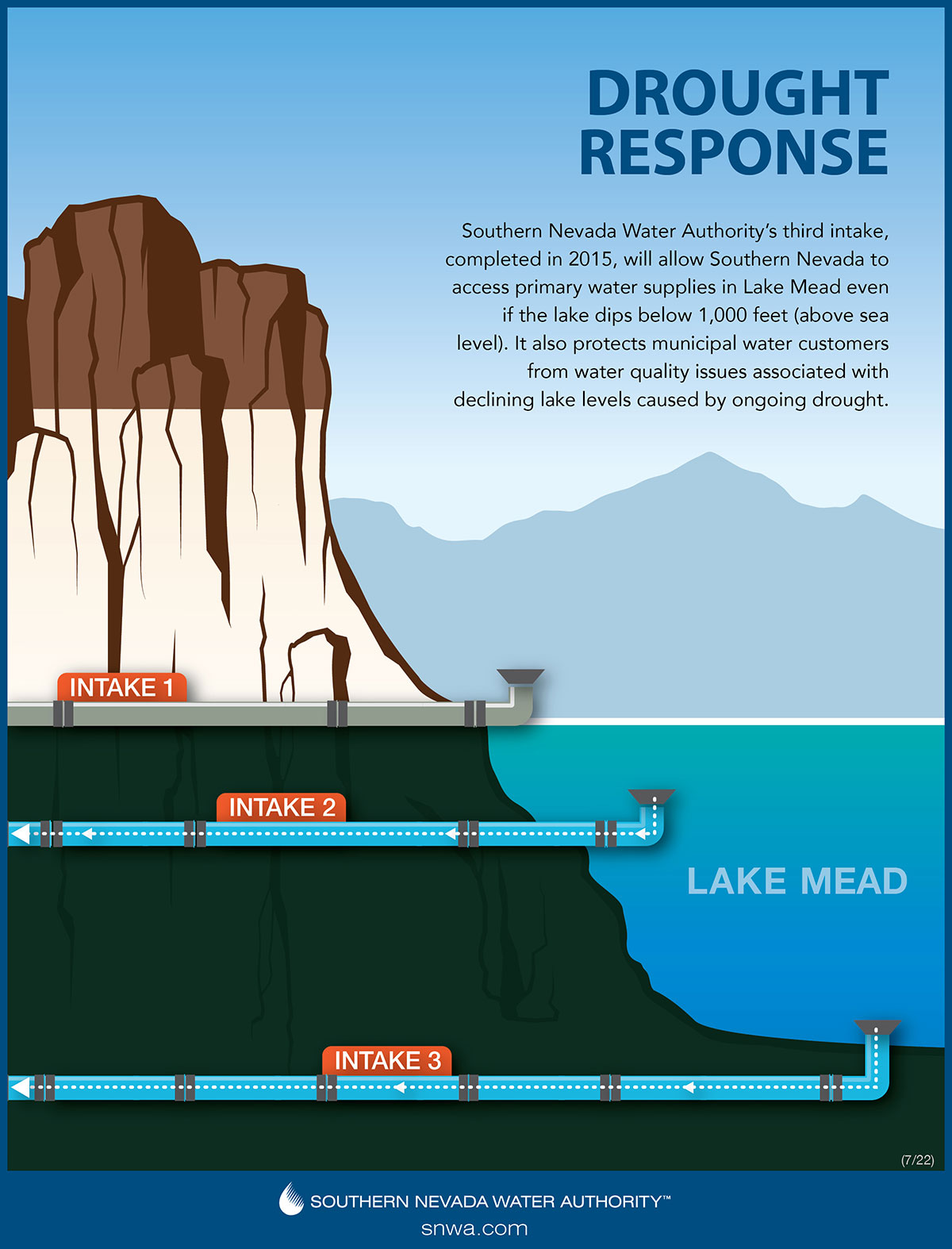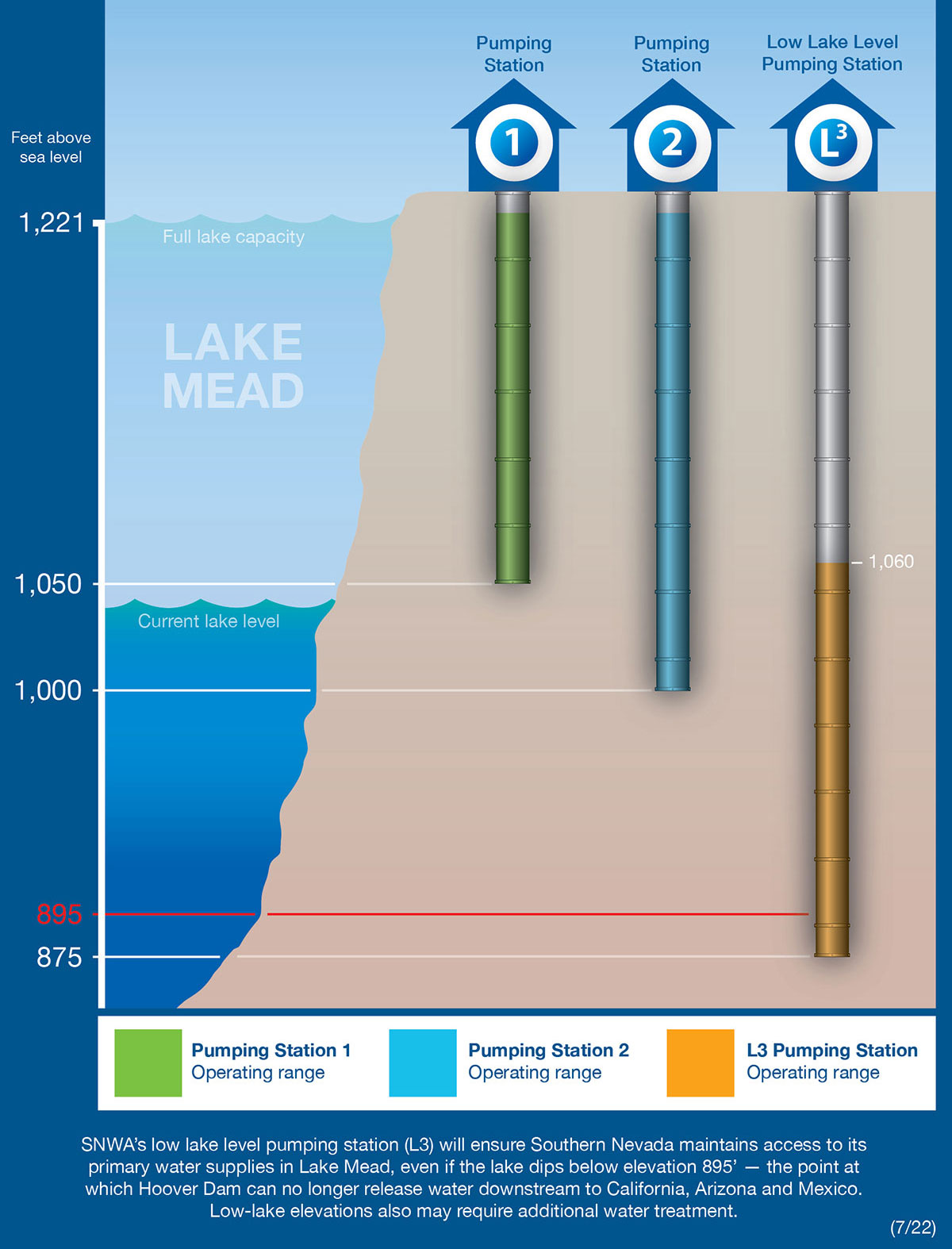Ongoing drought conditions in the Colorado River Basin have caused Lake Mead's elevation to fall more than 150 feet since 2000.
Two of the Southern Nevada Water Authority's most important completed infrastructure projects are Intake 3 and the Low Lake Level Pumping Station.
They work together to ensure Southern Nevada can access water supplies below Lake Mead's "dead pool" elevation of 895 feet — the point at which no water can pass through Hoover Dam to generate power or meet downstream water demands in California, Arizona or Mexico.
Intake 3
Intake 3 ensures Southern Nevada’s access to its primary water supply if lake levels continue to decline due to drought conditions. It also protects municipal water customers from water quality issues associated with declining lake levels.
Intake 3 began conveying water to our water treatment facilities in September 2015.
The construction of the intake began in 2008. A 24-foot diameter tunnel boring machine was utilized to excavate a tunnel under Lake Mead before connecting with an intake structure secured to the bottom of the lake with more than 1,000 truck-loads of concrete.
The intake works in concert with the Low Lake Level Pumping Station to protect Southern Nevada's access to water in Lake Mead.
Low Lake Level Pumping Station
Completed in 2020, the Low Lake Level Pumping Station started operating in April 2022 when the dramatic drop in the elevation of Lake Mead rendered one of our community's primary intake pumping stations inoperable. The Low Lake Level Pumping Station has the capacity to deliver up to 900 million gallons a day to our treatment facilities.
A citizen's advisory committee recommended the Southern Nevada Water Authority construct the pumping station, and it was approved by the SNWA's Board of Directors in May 2015. The estimated cost to design and build the Low Lake Level Pumping Station was $650 million but came in under budget at $522 million.
Development involved constructing a 26-foot-diameter access shaft more than 500 feet deep, then excavating a 12,500-square-foot underground cavern at its bottom. The cavern, known as a forebay, connects with 34 vertical shafts — each 500 feet deep and 6 feet in diameter — to accommodate the station's submersible pumping units.


